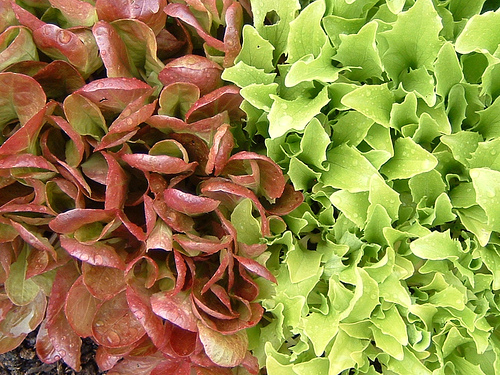Growing and Harvesting Winter Lettuce
While lettuces are predominately a cool-weather crop, there are summer varieties that don’t disappoint

Lettuces are one of my favorite vegetables to grow in the cold months. Most gardeners will end up planting them in a cold frame, greenhouse, or hoop house through the winter, but I think it’s so worth the extra trouble.
If the sound of lettuce growing doesn’t thrill you, its looks will. There are so many varieties that bring color, texture, and, oh yes, flavor. You’ll be amazed. Of course, before you plant any variety, you’ll want to do a tiny bit of research and see which do best in your area. Among them are oakleaf lettuces, icebergs, romaine, leaf lettuces, Bibbs, and butterheads. Lettuce comes in colors of light green, blue-green, red, deep purple, dark green; even mottled colors are always a welcome sight in the winter garden.
Between the seed size and my impatience, I plant them with a semi-broadcast. I try to drop only a few down a row, but it’s so hard to tell where they end up. So I pinch a bit of seed from my hand and sprinkle down a line all willy-nilly. I lightly rake about ¼ inch to ½ inch of soil over the top of them. I keep them watered, and the glass overhead keeps the soil at a decent enough temperature to get them to germinate in about a week or two.
When the little seedlings reach 1 inch tall, I use small scissors to thin them out. I try to space them about 5 to 8 inches apart. I’ll admit that if you’re mixing lettuce varieties, this part can be tricky. This is because romaine may need 10 inches of space while leaf lettuce may need only 8 inches and Bibb only 6 inches. The back of your seed packet will tell the story. I just clip the seedlings that are too close together down to the ground. I either leave them there to become part of the soil or toss them to the chickens. By the way, anyone with more patience than I would use them to sprinkle on their own salad.
Some lettuce varieties are ready to harvest so fast that it’ll only be a little over a month before those leaves end up in your salad bowl. Speaking of which, there are a couple of ways to go about harvesting lettuce. The first way is to take the outer leaves only, which is the way of leaf lettuces. The nice thing about this type of harvesting is that the plant can continue to grow and you basically make salads straight from the bed. When you see a stem forming in the middle, the leaves will begin to taste bitter, as the plant is beginning to bolt.
The second way is to harvest the entire lettuce head. Head lettuces such as icebergs are obviously natural for this method. You simply wait until the head is mature but still on the young side, and then you take the whole head of lettuce. Then there’s the cut-and-come-again method. When most of the leaves have grown to the right size for salads, cut them at about an inch above the soil. The plants will regrow, and you’ll get one or two more harvests out of that head.
While lettuces are predominately a cool-weather crop, there are summer varieties that don’t disappoint. They’re so easy to plant, grow, and harvest that I try to have lettuces in my garden every season.






Comments
Log in or create an account to post a comment.
Sign up Log in